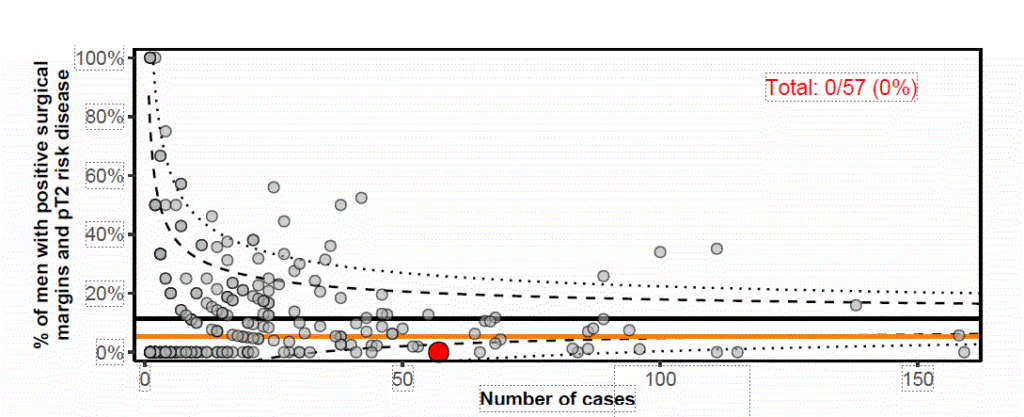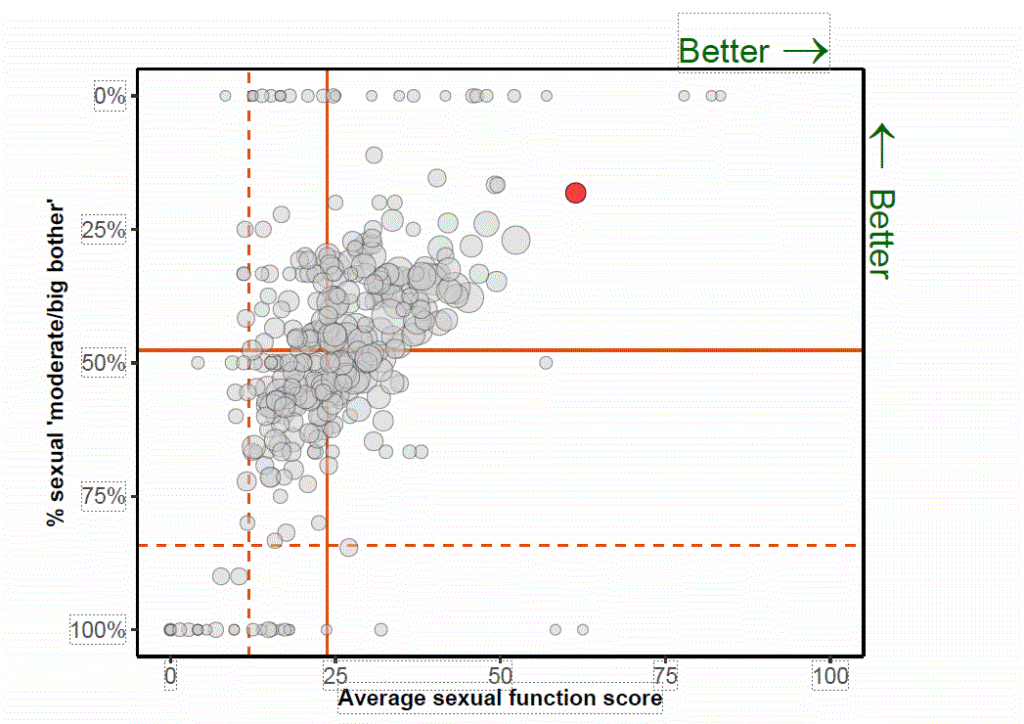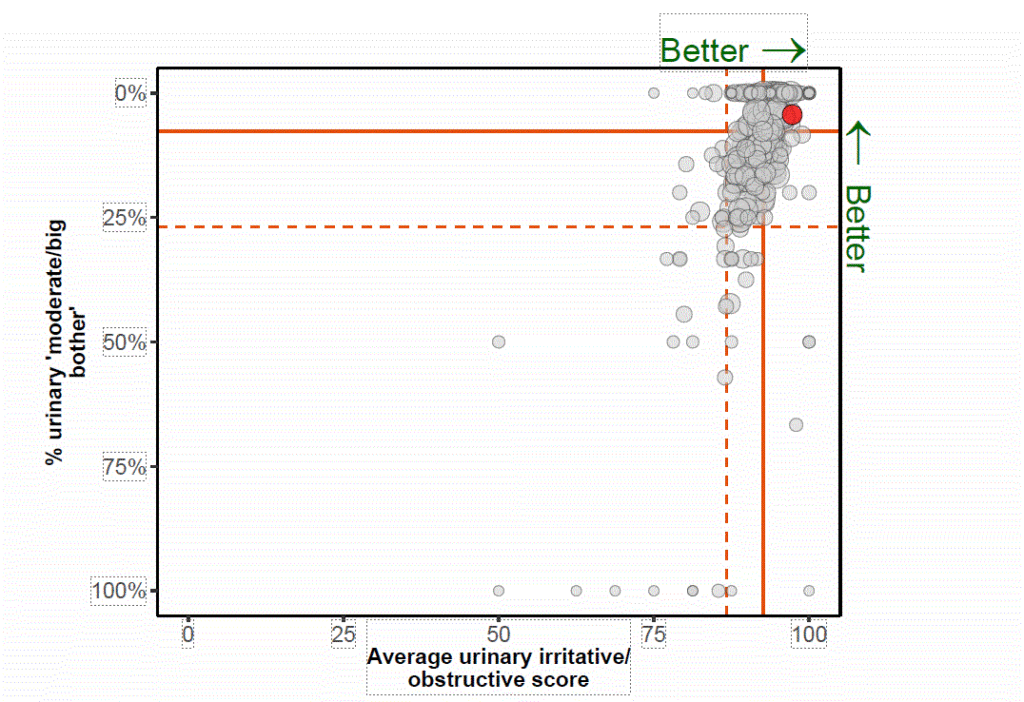Experience
I have performed over 2800 robot-assisted radical prostatectomies which is the most in the state of New South Wales and the second most in Australia. I perform approximately 200 cases per year. In addition to this, I performed over 4000 open radical prostatectomies. I have had no major complications from my technique of robotic radical prostatectomy in over a thousand cases. The procedure takes just under two hours and my patients are in hospital on average for two days.
Technique
I have developed a technique to protect the erectile nerves and the urinary sphincter and this technique has evolved over 20 years. In addition, a special part of the technique is protecting the blood supply to the penis due to aberrant pudendal arteries and maximising nerve preservation even when cancers are more extensive. Multiple other improvements in technique have occurred over the 20 years, many evolved from my teachers such as world leaders Vip Patel and Ash Tewari.
Results
In my hands there is a 99.5% clearance rate in the eradication of early stage prostate cancers (pT2) and an 86% chance of clearance of cancer of the prostate even in more advanced cases. Attached is a copy of my pathology results for the last two years from the pathology laboratory Douglass Hanly Moir as well as from the Cancer Institute of New South Wales. These results are compared anonymously with other urologists from New South Wales and Australia.( Pt2 Positive Margin and PS RP stats)
Prostate Cancer Outcomes Registry
Dr Stricker Other CliniciansPercentage of men with positive surgical margins and pT2 diease operated on in a PRIVATE HOSPITAL, and trend over time.

Multi-dimensional representation of self-reported sexual function and sexual bother 12 months after radical prostatectomy

Multi-dimensional representation of self-reported urinary function (irritation and/or obstruction)and urinary bother 12 months after radical prostatectomy

Data involved in the graphs shown above is sourced from the Prostate Cancer Outcomes Registry – NSW, funded by Movember. The registry is managed by Cancer Institute NSW, in collaboration with the NSW Agency for Clinical Innovation, and supported by Monash University.
Douglass Hanly Moir Pathology
Radical Prostatectomy Review – July 01, 2022 – June 30, 2024
Continence
Incontinence after surgery is a major concern shared by many patients. In my hands, 99% of patients gain near perfect continence after robot radical prostatectomy. Some patients due to unusual anatomy or physiology may not recover full continence. However, the vast majority recovered continence within three months and almost 80% within six weeks.
My technique which has been presented internationally and presented in the following table. Could you also attach here the Cancer Institute of New South Wales continence urinary bother score .(Urinary Bother 2024)
As you can see from my results in the Cancer Institute of New South Wales urinary outcomes bother level , my level of continence compares very favourably with the other de-identified urologists throughout New South Wales. (Urinary Bother 2024)
| Current early continence outcomes | ||
| Time | 0-1 precautionary pads | 0 pads |
| 6 weeks | 78% | 33% |
| 3 months | 95% | 72% |
| 6 months | 98% | 92% |
| 12 months | 99% | 94% |
Sexual recovery
The nerves responsible for proper erectile functioning are small fragile fibres attached to the back of the prostate requiring experience and special skills and technique to protect them from damage – this has been a passion of mine for over 25 years.
Three factors have a strong influence on the recovery of sexual function following radical prostatectomy.
- The age of the patient.
- The preoperative status of sexual function.
- The surgical technique.
One of the potential advantages of robotic surgery in the hands of an experienced surgeon over conventional open surgery is the preservation of these delicate nerves and the ability to regain earlier sexual function.
The ability to preserve nerves is dependent upon the cancer and on the surgeon’s experience and assessment during surgery. The technique that I have developed over many years has evolved to maximise potency. This also includes the preservation of arterial supply as well as nerve supply.
Clearly potency recovery is variable in each patient but a high percentage of my patients with normal function have full bilateral nerve preservation especially in the younger age group, thus regaining sexual function.
A patient outcome study has evaluated the status of my patients post radical prostatectomy. With followup between 12 and 24 months, 73% of my patients were potent following nerve-sparing surgery, while in the under 60-year-old age group, 84% of patients were potent.
| Erection recovery | ||
| Age | Recovery | Time |
| 40 – 50 | 92% | 12 – 18 months |
| 50 – 60 | 85% | 12 – 18 months |
| 60 – 70 | 72% | 12 – 18 months |
Potency was defined as the ability to have intercourse on most attempts with or without the use of Viagra-like substances. (After that goes a table which is already there and in addition to this a picture of sexual bother from the Cancer Institute New South Wales.) (Sexual Bother 2024)
It can be seen by the sexual bother score established by prospective questionnaires that my results compare extremely favourably with the other de-identified urologists throughout New South Wales.
